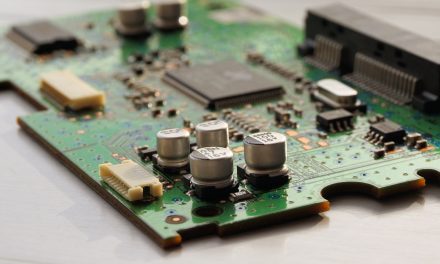The nano world: A new frontier – Metrology for nanotechnology
Nanotechnology might seem cutting edge, but humans have actually been experimenting with nanomaterials for hundreds of years – albeit accidentally. In fact, stained glass windows came about as the result of a heating and cooling process that adjusted the size of nanocrystals in the glass. Medieval nanotechnologists may not have been aware of the scale they were working at, but this art form is widely considered as one of the first examples of manipulating nanomaterials. Today, technologists are beginning to understand the full potential of the nanoscale by experimenting with the measurement and management of nanomaterials.
Here, Brian McLay, metrology business manager of precision measurement specialist, Starrett, examines how precision metrology will support the rise of nanotechnology.
Evolving nanotechnology
Over the past three decades, the science of nanotechnology has grown from complete obscurity into an industry worth trillions of pounds. Nanomaterials already contribute to over 1,800 consumer goods, but the future predictions for this technology are far more remarkable. Faster computer chips, life-saving medical devices and environmentally restoring inventions are among the many nanotech applications set to change the way we live.
The ability to observe and construct things at a tiny scale is the heart of nanotechnology. To put the scale of a nanometre into perspective, this unit of measurement tallies at one billionth of a metre. A single strand of human hair is around 80,000 nanometres in width, a strand of human DNA is 2.5 nanometres in diameter and your fingernail grows by approximately one nanometre every second.
As nanotechnology is evolving, so is the scope for its commercial expansion. However, scientists have discovered that, when working at this scale, every day materials begin to behave in unusual ways, opening entirely new opportunities — and potential challenges — for manufacturers and scientists.
Clearly, nanotechnology has the potential to be a major driver for the manufacturing economy of the future. However, significant research and development (R&D) is required to ensure high quality precision of these materials, and manufacturers will require more advanced technology to accurately manage materials on this scale.
Measurement for manufacturing
Metrology and precision measurement already play an integral role in product design and manufacturing. The technology behind quality assurance processes ensure every product works the way it should, safely and effectively. In the nanoworld, however, the role of metrology will become much, much more complicated!
One of the biggest challenges for manufacturers hoping to experiment with nanotechnology is the need to develop new measurement techniques that meet the requirements of the nanoscale. The development of nanotechnologies cannot advance without progress in nanometrology first — affording the ability to measure and characterise nanoscale materials according to their shape, size and physical properties.
Maintaining control of the critical dimensions of a nanomaterial is one of the most important factors when working with materials this small. Manufacturers need to constantly control all parameters and performance, otherwise the material is at risk of manipulation. Material quantities such as linewidth, pattern overlay error, composition and concentration all need to be closely measured as the slightest error can end in disaster, and this can only be done if metrology advances to keep up with this new technique.
Investing in nanometrology
While nanotechnology is a hugely exciting and rapidly advancing field, substantial progress is required before we see it reach its full potential. Manufacturers, including Starrett, need to invest their time and resources into the development of nanometrology and the supporting metrology technology to create a firm foundation for growth. Without investment in precision measurement, we will not achieve the impressive predictions set for nanotechnology in the future.
Nanotechnology has come a long way since the accidental nanoscale manipulation of the 13th century stained-glass windows. There is no denying that the technology has enormous potential, from the creation of life-saving medical devices to enabling high-tech IT innovations that will change the way we work, communicate and play. However, the development of nanotechnologies relies on progress and development in nanometrology first — and there is still a long way to go.













